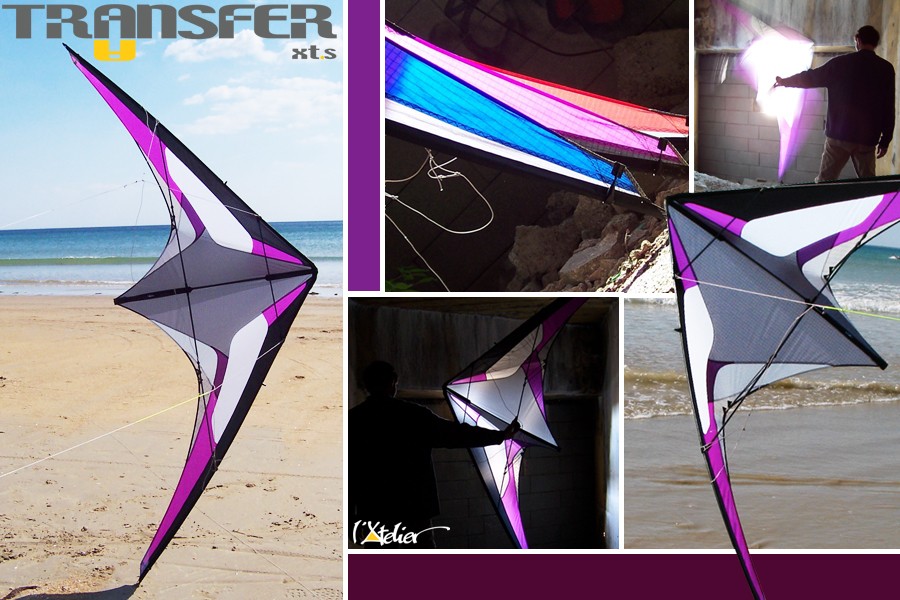“…As you might know, lately there has been quite a bit of discussion about the Transfer’s flying characteristics. One point, in particular, has been the Transfers ability, or rather it’s inability, to do a stable fade. During my first few hours with the Transfer this didn’t occur to me as a problem, but based on the discussion, I decided to go for a closer look.
So yesterday I managed to leave work a little early and drove off to one of the local flying fields. The conditions were far from perfect. The wind was a bit on the strong side – I’d say 4-5m/sec or 10-15mph – and somewhat gusty. Definitely not the best conditions to investigate the Transfer’s ability to hold a fade. But as you know, it’s hard to do anything about the weather, and at least it was sunny!

So I assembled the Transfer and started to warm up, and after some easy and relaxed flying I was ready to dig into the fade issue.
My initial plan was to put the kite on the ground – belly down nose away – to sweep itt off the ground and into a fade launch. I have always concidered this the best way to find out how a kite will perform in a fade. Unfortunately the wind was too strong to do this concistantly, but I managed a few goes. And the kite did pretty well. It’s very easy to rotate the Transfer from the belly down nose away position into the fade. And I didn’t have too much trouble maintaining the fade either. Rising fades were manageble when the wind headed towards favourable.
Aerial pancakes to fade are easy too, and I didn’t have much trouble maintaining the fades coming this way either. The same goes with axels to fade.

Even though I didn’t have any major issues with the fade, there are a few things you should be aware of. The Transfer fades in a noticably flatter position than… lets say the Nirvana. Even with the 15g tail weight installed the Transfer sits in a pretty flat fade, thus making it more prone to nose tip down, should an unfavourable gust come in its direction.
But when you’re aware of this characteristic, it’s possible to tend the fade in a way that will make you maintain the fade position. Let’s just say that the Transfer is a little less forgiving in this fade position than a few other kites
. But as soon as you learn the touch and get the line tension and timing required, you should be able to do pretty solid fades and rising fades most of the time.
I conscider the flatter fade a feature (of which you can take advantage of) rather than a fault!
Please note that I flew the Transfer once again right outta the bag with no bridle mods whatsoever to the factory settings for the first half of the session. For the last half I had to adjust the bridle for the wind picking up, by pulling its nose down by approx 1cm. This didn’t seem to have any significant impact in the Transfer’s fadeability. The 15g tail weight was also installed during the entire session. …”
This article was originally posted on aerialis.com on Aug 27th 2004




